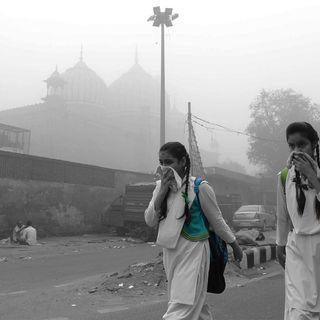In two decades, the proportion of children under five who died due to malnutrition decreased only by 2%, according to a report by the Indian Council of Medical Research (ICMR).
“Malnutrition is a major contributor to disease burden in India,” states the report, which published recently in the journal The Lancet Child and Adolescent Health.
Per the researchers, who tracked maternal and child malnutrition data from every state in India between 1990 and 2017, malnutrition caused 68% of deaths of children under age 5 during this time period. Malnutrition was also a leading risk factor for poor health across all ages, responsible for about 17% of the collective number of years lost by a population due to ill-health, disability or early death, a metric known as DALYs.
The highest rates of malnutrition among women and children were observed in Uttar Pradesh, Bihar, Assam and Rajasthan.
All in all, the report stated that although the overall death rate of children under 5 has come down significantly between the years 1990 and 2017, that due to malnutrition declined only by 2%.
One of the most prominent markers of continued malnutrition in children is low birth-weight; 21% of children born in 2017 weighed less than they should have at birth. Other markers include child growth failure that is characterized by stunting, wasting (low weight for height) and being underweight.
“While it is important to address the gaps in all malnutrition indicators, low birth weight needs particular policy attention as it is the biggest contributor to child death among all malnutrition indications and its rate of decline is among the lowest,” Lalit Dandona, director, India State-Level Disease Burden Initiative, told LiveMint.
The mother’s age at childbirth, level of education, access to nutritious food and iron supplementation are socio-economic factors that determine the weight at birth in India. At least 25% of these mothers are just adolescents when they give birth, according to an earlier Lancet report.
Related on The Swaddle:
Progress Made to Eradicate Malnutrition, Stunting Is Now Being Reversed by Climate Change‑Related Droughts
“Children born to adolescent mothers are at risk of being undernourished. Adolescent pregnancy is related to child undernutrition,” the earlier report concluded.
For women, on the other hand, malnutrition meant chronic deficiency of energy and anemia, a condition that consequently increases the risk of preterm birth and babies born with low birth weight. The ICMR study estimated that in 2017, 54% of women in India had anemia.
Unavailability of a proper diet and nutritional care for mothers during pregnancy, along with adolescent pregnancy, has made India home to more stunted children than any other country, per a U.S.-based International Food Policy Research Institute.
“Because low birth-weight was the largest contributor to child malnutrition DALYs in India, its slow decline should be addressed as a priority,” according to the study.
But in addition to that, we also need to “focus on improving the overall nutritional status of girls and women during the preconception and pregnancy period and providing quality antenatal care,” Vinod K. Paul, a professor at Niti Aayog, the Indian government’s think tank that facilitates the process of developing sustainable development goals, told LiveMint. This will, he said, “… positively influence low birth weight indicators and extend the benefits to next generation.”




